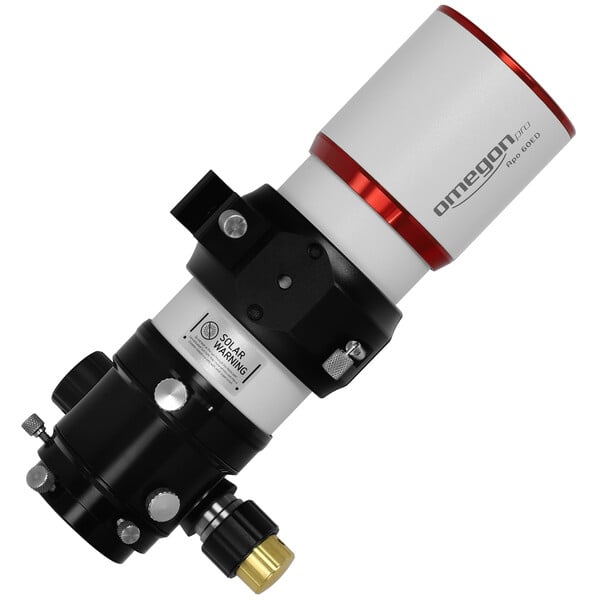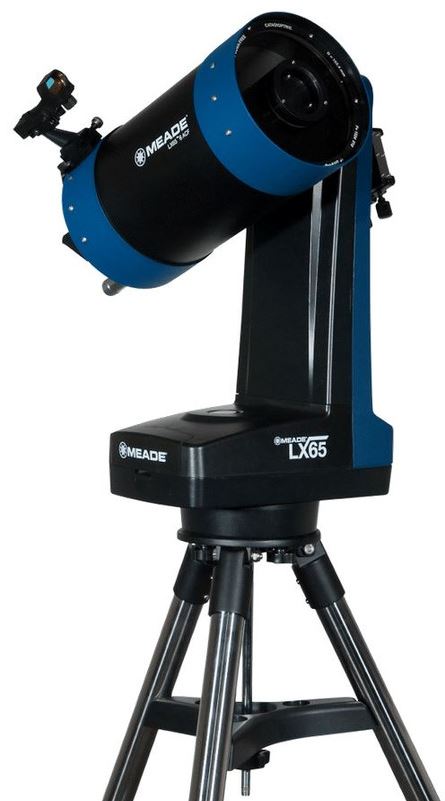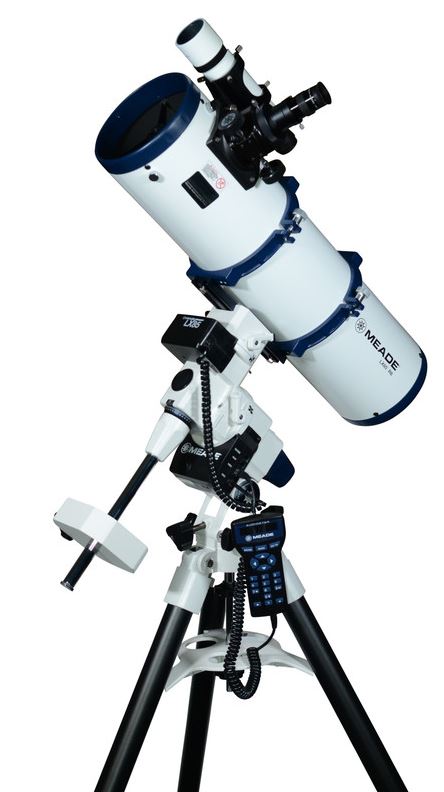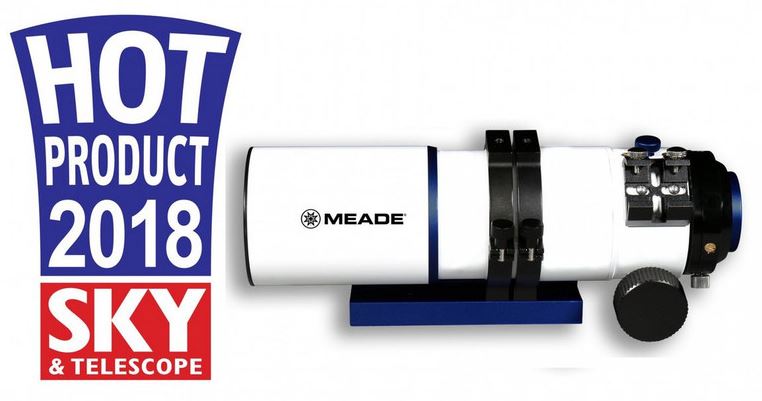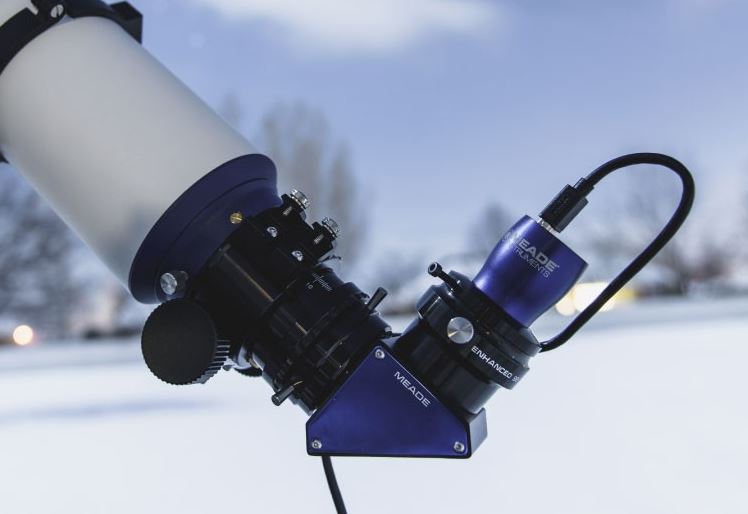A simple Dobsonian or a GoTo telescope? – a question whose answer you first have to decide on. You should also choose your telescope based on what you would like to observe or experience in the night sky.
Did you know that there is also a system with something like ‘a bit of GoTo’?
But how do you find out if a Dobsonian telescope is right for you? In Part 1 of this post, we’ve put together a few questions to help you find your preferences.
Following on, in part 2, there are product recommendations for three different telescope series, with you can use to explore the night sky.
Part 1
Are you an observer for whom a Dobsonian telescope is suitable? Or do you need a telescope with an equatorial mount? Decide which using the following questions:
1. Do you only want to observe or also to take photos?
There are two types of observing: the visual and photographic. Which do you prefer? If you are a visual observer, then a Dobsonian would probably be the right choice.
1 Yes I want to observe visually.
2 I do not know yet, maybe both.
3 Taking photos is more important to me than observing visually.
2. What do you value more? – the optics or the mechanics and electronics?
Dobsonian telescopes consist of a wooden box with plain bearings, called a ‘Rockerbox’, and a Newtonian mirror OTA. A clear emphasis here is placed on a larger OTA diameter. The mechanics remain simple. The advantage – you get a large aperture telescope for relatively little outlay, with which you can observe a lot.
1 I put more emphasis on a great optics for a low price.
2 I cannot commit myself, maybe both.
3 I am a fan of complex mechanics that controls my telescope via slow motions and worm gears.
3. Quick assembly or precise alignment?
Dobsonian telescopes consist of only two parts. The advantage – just two parts can be quickly transported and reassembled at the observing site. They are often much quicker to put together than a telescope with a tripod, equatorial mount, several counterweights and the OTA itself. You do not have to align a Dobsonian telescope to the celestial north pole, you are tracking in both axes’ directions.
1 I want to set up my telescope quickly, I can’t be bothered with all the complexity of assembling and observing with an equatorial set up.
2 I would like to have GoTo, but only if the setup does not take too long.
3 I’d rather spend more time putting the system together and precisely aligning it.
4. Do you prefer observing the Moon and planets, or observing galaxies?
A medium to large Newtonian telescope is of course also suitable for planetary observing. But the strengths of a large mirror lie in its greater light-gathering power. This makes many Dobsonian telescopes suitable for observing nebulae and galaxies. Bu if you are more interested in the Moon and planets, then a refractor telescope would be the better choice.
1 I want to observe nebulae and galaxies.
2 I want to observe nebulae and galaxies, but how am I supposed to find them?
3 I am interested in the Moon and the planets, but there is so much light pollution where I live that I cannot observe galaxies very well. An automated telescope would have to find them.
5. Exploring the night sky with a star map or using a GoTo system?
Dobsonian telescopes are almost always manually controlled instruments. In other words, there is no GoTo system here that slews to objects at the push of a button. You have to guide the telescope purely manually to the object of your choice with the help of a star map and then track it manually. But what is the advantage of that? Quite simply – the night sky will eventually become your familiar hunting ground that you know like the back of your hand. You’ll become a real expert at finding deep sky objects. And you will develop a feeling for tracking objects. The other thing is that it’s a lot of fun, and every time you find an object there is that little thrill of achievement.
1 Of course, I want to find the objects myself using a Dobsonian telescope.
2 I’m afraid that I’m not so good at orienting myself.
3 I’m not really interested in star hopping – there are GoTo telescopes for finding astronomical objects.
6. Naturally experiencing the night sky using only a little technology?
Observers repeatedly report that they can enjoy a natural experience to the maximum with a Dobsonian telescope. There is no complicated technology here that needs to be made to work. No, naturally experiencing the night sky without any motor noise is the most important thing.
1 I want to visibly experience the night sky in a clear simple and natural way.
2 I would like to be able to to add a little technology if I want.
3 No, this manual control idea is not for me. State-of-the-art technology and GoTo systems would be my first choice.
Your answers
If you answered most questions with a 1, then you are definitely a ‘Dobsonau’. You should immediately buy a Dobsonian telescope – perhaps one of the three examples detailed below?
If you’ve answered most questions with a 2, then you’d like to observe with a Dobsonian, but GoTo systems also tempt you. The Onmegon Push+ Telescope with object navigator (see below) would be the way to go.
If you answered most questions with a 3, then you’d better use a GoTo system. Here, we have a large selection.
Part 2
We have three Dobsonian telescopes in our program: the Omegon Advanced X Dobsonian telescope for beginners, the Omegon ProDob for intermediates and experts and the Omegon Push+ with push-to-technology.
Omegon Advanced X Dobsonian telescope – for getting into deep sky observing
These telescopes are a great way to start visual deep sky observing. Explore star clusters, hydrogen nebulae, planetary nebulae, and even galaxies with their spiral arms. With a 200mm lens aperture, this telescope will show you hundreds of interesting objects. If you want even more light, you can also use the Omegon Advanced X N 254/1200 or a real ‘light cannon’, the Omegon Advanced X N 304/1500. Of course, ‘excursions’ to the Moon and the planets are also possible.
If you do not want to spend a lot of money, but are looking for a great value-for-money telescope, then an Omegon Advanced X is the instrument for you.
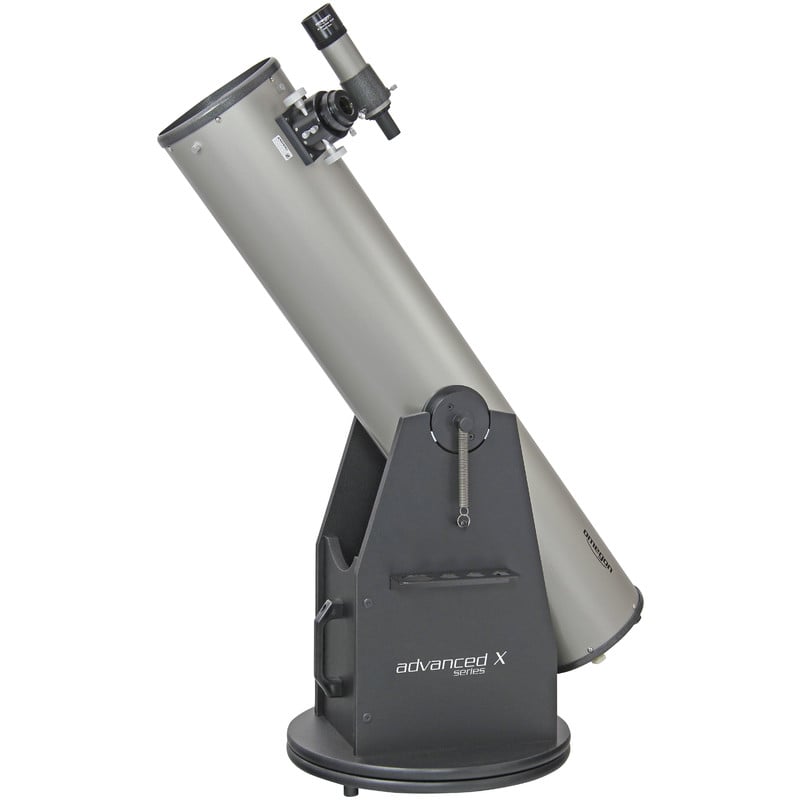
The Omegon ProDob – deluxe Dobsonian with an excellent friction system
ProDob Dobson telescopes come with a particularly good 2″ Crayford focuser and a deluxe friction system. Once an object is centred in the eyepiece, tracking is even more accurate and precise – even at very high magnifications. There is no juddering or anything (as with instruments with Teflon bearings), as when slewing the telescope it almost floats to the next object. The reason for this is a ball-bearing system in the elevation axis and roller-bearings in azimuth. And also, the friction level can be set to your needs. High magnifications are also possible with a Dobsonian.
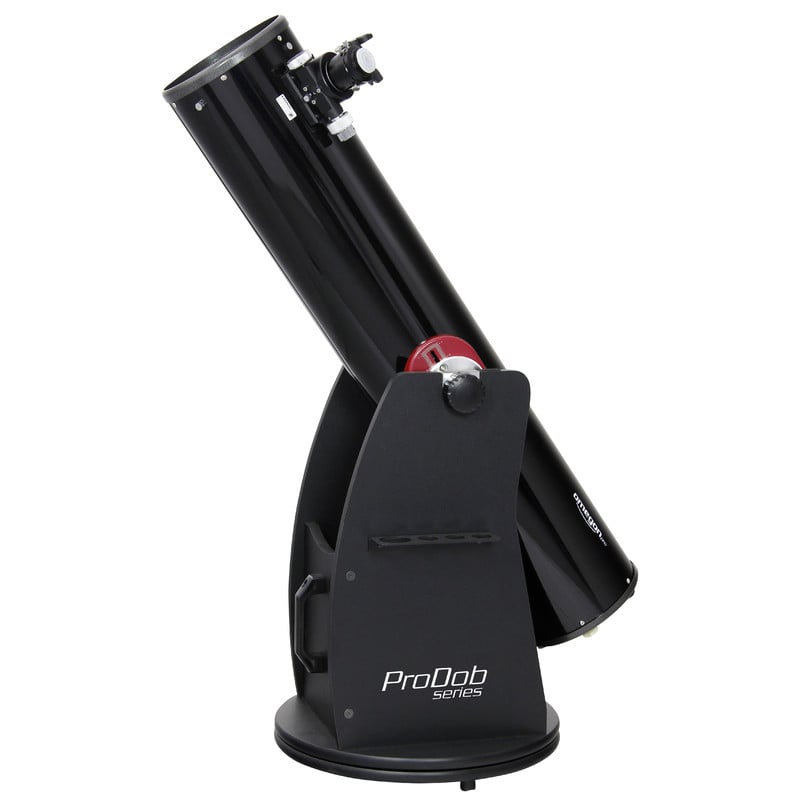
The ProDob from Omegon comes in a range of apertures:
– ProDob N203/1200 with 8“ diameter
– ProDob N254/1200 with 10“ diameter
– ProDob N304/1500 with 12“ diameter
– ProDob N406/1850 with 16“ diameter
Omgeon Push+ – control a Dobsonian telescope using your smartphone
With the Omegon Push+ Dobsonian, you can travel to the planets, nebulae and galaxies in the universe whenever you wish. You do not even need to be very knowledgeable about the night sky, because the telescope guides you using a push-to-system to any object you wish to observe. All you need is an Android smartphone and the SkySafari 4.0 app.
The Omegon Push+ and Push+ Mini telescopes bridge the gap between a purely manual Dobsonian and a GoTo telescope. So to speak: ‘A bit of Goto’, so to speak – as the Push+ can still be slewed manually, as is common with Dobsonian telescopes, but also using your smartphone and built-in fine-step encoder in the telescope,
The high-resolution encoders allow the system to take you to any astronomical object you desire. Your smartphone functions as a display screen and at the same time orients you in the night sky. A crosshair shows you the position of your telescope in real time. You can decide, at any time, whether you want to use the push-to-system or prefer to control the telescope completely manually – it’s nice to have the choice!
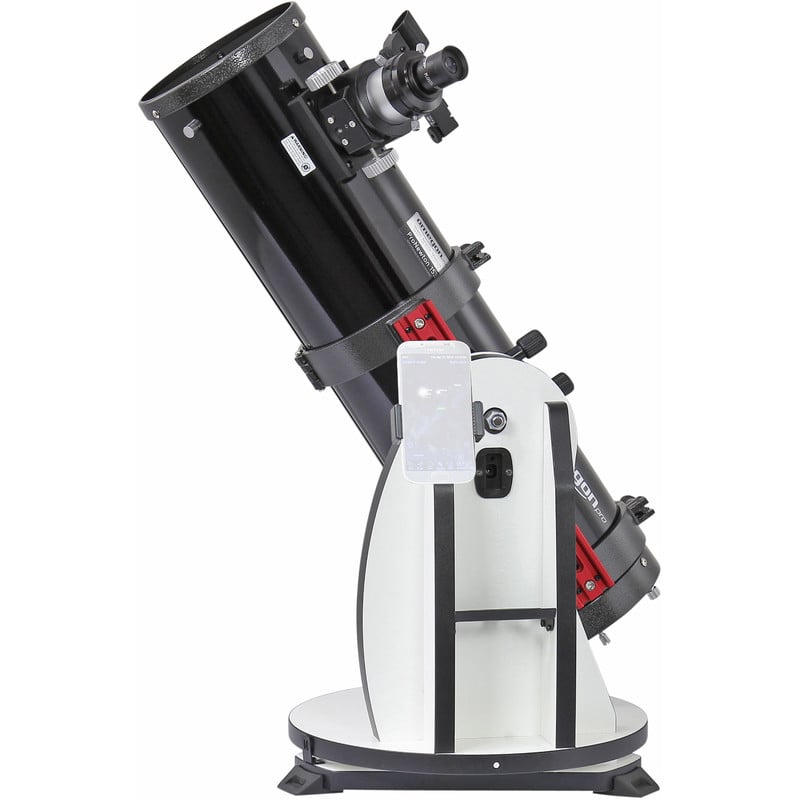
The Omegon Push+ is available with a 200mm (8″) OTA or as a Push+ Mini with a 150mm (6″) OTA:
– Omegon Push+ mini N 150/750 Pro Dobsonian telescope
– Omegon Push+ mini N 150/750 Dobsonian telescope
– Omegon Push+ mini N 150/750 Skywatcher Dobsonian telescope






